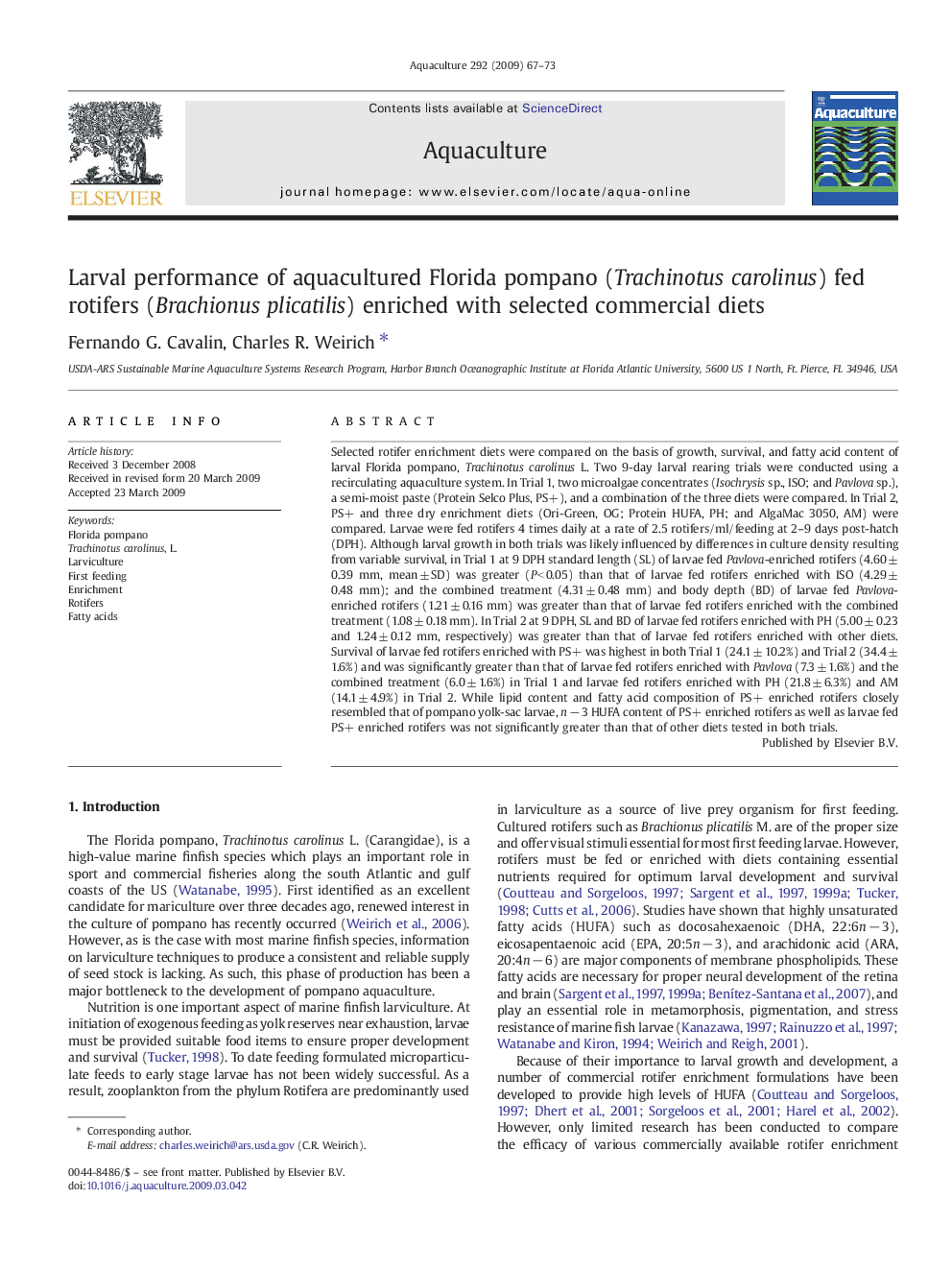| Article ID | Journal | Published Year | Pages | File Type |
|---|---|---|---|---|
| 2424033 | Aquaculture | 2009 | 7 Pages |
Selected rotifer enrichment diets were compared on the basis of growth, survival, and fatty acid content of larval Florida pompano, Trachinotus carolinus L. Two 9-day larval rearing trials were conducted using a recirculating aquaculture system. In Trial 1, two microalgae concentrates (Isochrysis sp., ISO; and Pavlova sp.), a semi-moist paste (Protein Selco Plus, PS+), and a combination of the three diets were compared. In Trial 2, PS+ and three dry enrichment diets (Ori-Green, OG; Protein HUFA, PH; and AlgaMac 3050, AM) were compared. Larvae were fed rotifers 4 times daily at a rate of 2.5 rotifers/ml/feeding at 2–9 days post-hatch (DPH). Although larval growth in both trials was likely influenced by differences in culture density resulting from variable survival, in Trial 1 at 9 DPH standard length (SL) of larvae fed Pavlova-enriched rotifers (4.60 ±0.39 mm, mean ± SD) was greater (P < 0.05) than that of larvae fed rotifers enriched with ISO (4.29 ±0.48 mm); and the combined treatment (4.31 ± 0.48 mm) and body depth (BD) of larvae fed Pavlova-enriched rotifers (1.21 ± 0.16 mm) was greater than that of larvae fed rotifers enriched with the combined treatment (1.08 ± 0.18 mm). In Trial 2 at 9 DPH, SL and BD of larvae fed rotifers enriched with PH (5.00 ± 0.23 and 1.24 ± 0.12 mm, respectively) was greater than that of larvae fed rotifers enriched with other diets. Survival of larvae fed rotifers enriched with PS+ was highest in both Trial 1 (24.1 ± 10.2%) and Trial 2 (34.4 ±1.6%) and was significantly greater than that of larvae fed rotifers enriched with Pavlova (7.3 ± 1.6%) and the combined treatment (6.0 ± 1.6%) in Trial 1 and larvae fed rotifers enriched with PH (21.8 ± 6.3%) and AM (14.1 ± 4.9%) in Trial 2. While lipid content and fatty acid composition of PS+ enriched rotifers closely resembled that of pompano yolk-sac larvae, n − 3 HUFA content of PS+ enriched rotifers as well as larvae fed PS+ enriched rotifers was not significantly greater than that of other diets tested in both trials.
